The different LBJ bolts and why it's important, Prado 90 Series
Toyota Prado 90 Series
THE DIFFERENT LBJ BOLTS AND WHY IT'S IMPORTANT
Also related: FAQ - LBJ inspection
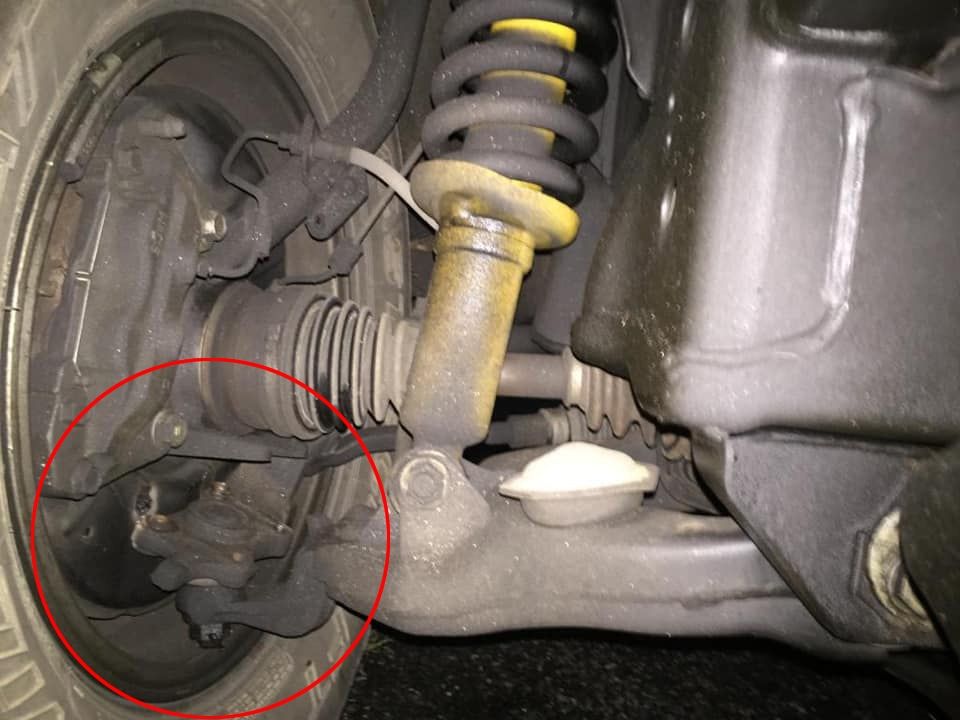
The dreaded LBJ failure is not always due to the LBJ itself!
It can also occur from:
- UBJ failure
- Bad suspension setup causing excessive droop (typically from strut spacers).
- Bolt failure - seen above - from incorrect torque causing bolt stretching or looseness.
Summary of bolt choices, strengths and torque ratings:
Without dust covers:
8x 90105-10406 - green coated flange head bolt - 80nm - tensile estimate 12.9
With added dust covers, use 2 of each per side:
4x 90119-10933 - longer washer-head bolt - 50nm~59nm* - tensile estimate 8.8
4x 90105-10505 - red coated flange head bolt - 50nm~59nm* - tensile estimate 8.8
* 50~59nm is an approximation, not 100% confirmed.
Also note: Alternatively 8x 933 bolts can be used, as done by some Toyota dealerships. With this arrangement, there's a tiny risk of 2 bolts not being able to thread all the way into the hub - I'm only aware of this happening once, and they were not using Toyota bolts.
USA/Canada, 4runners, Tacomas, etc
8x 90105-10406 - Toyota database: 4runner and Tacoma.
8x 90080-10066 - Flange head bolts, made in USA. This seems to be the most common one mentioned online by people in the states (???). Toyota database: Tundra, Sequoia, Lexus RX330/350. Tensile unknown, but I'd expect them to be equivalent to the global market 90105-10406 (80nm).
Neither of those 2 bolts above should be used with dust covers (explained further below).
The 90119-10933 bolts have also been used in the states - often with incorrect torque!
TOYODIY listing and visual comparison of some used bolts:
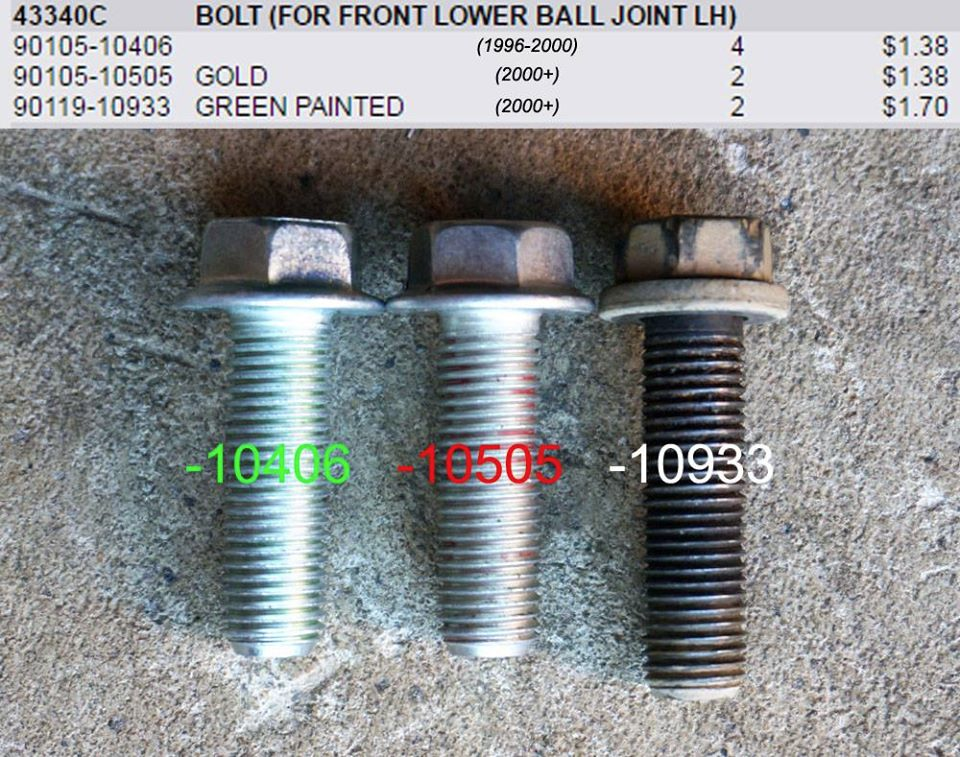
Why are there different bolts?
In Sep 2000 Toyota introduced dust covers - not to be confused with the ball joint grease boot. Along with this, different bolts were used.
Speculating on the reasons for changing bolts, I guess....
Longer, to maintain sufficient bolt thread engagement into the hub - as the dust cover mounting rings will consume a couple mm of bolt thread.
Washer head, instead of flange, to avoid twisting the dust cover mounting rings.
Lower torque ratings, possibly to prevent the mounting rings from being crushed... or maybe some other 'strength' related reasons? Or maybe no reason!?
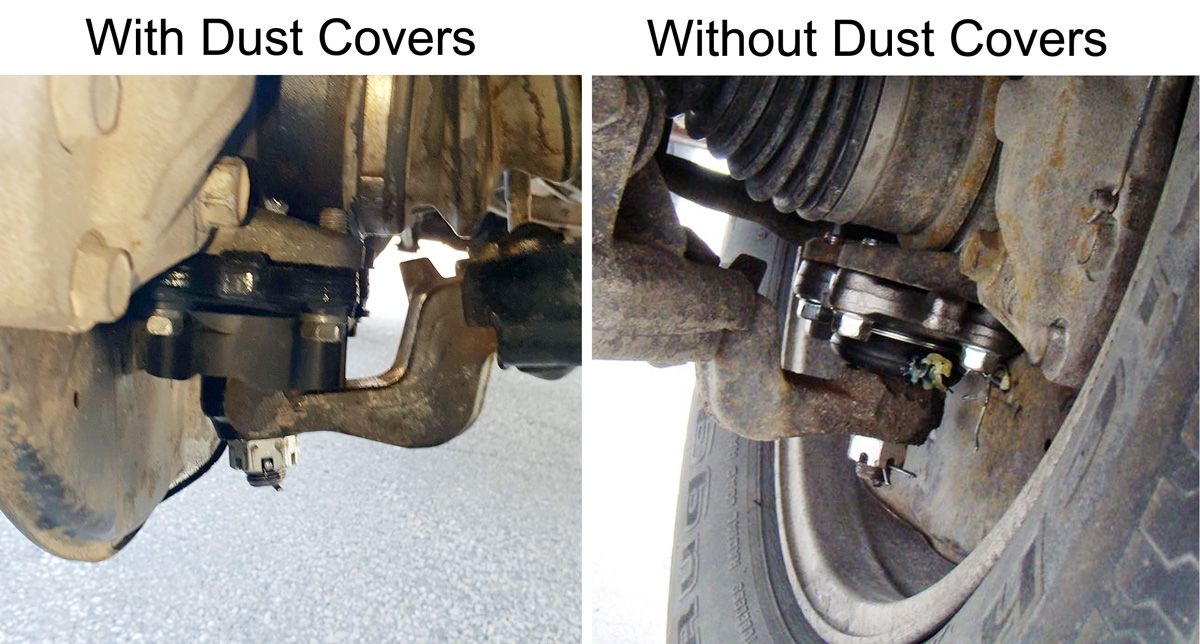
Destruction test - estimating the torque ratings
Long ago, having found some bolts couldn't handle the expected 80nm, I decided to do some testing. This is a rudimentary bench test - original Toyota bolts threading into 2 nuts, whilst clamping a washer and two rings of steel. Tightening up with a torque wrench, in 10nm stages. Bolts and nuts replaced between each test.
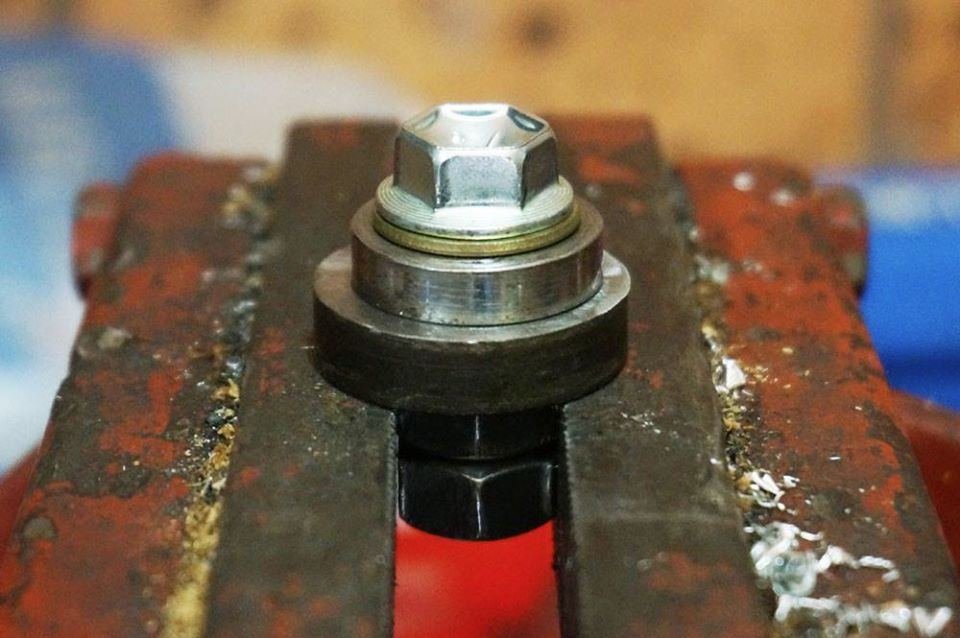
*505 flange-head bolt, red coated - could not handle the higher torque rating of 80nm. Stretching somewhere between 60-80nm. At 80nm, the stretching was very significant.
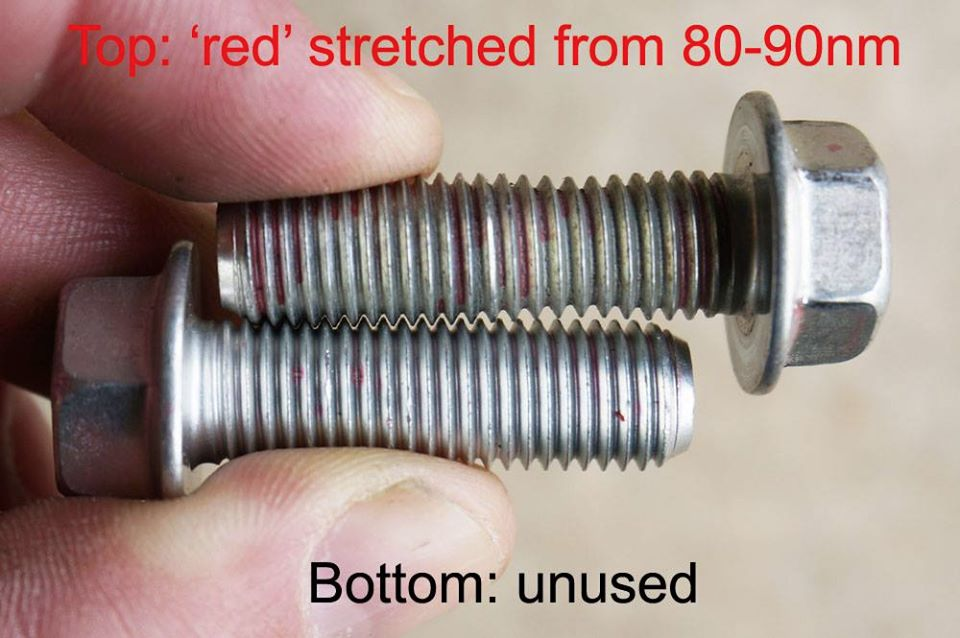
*406 flange-head bolt, green coated - can easily handle 80nm. Stretching somewhere between 80-110nm. Total destruction somewhere above 130nm.
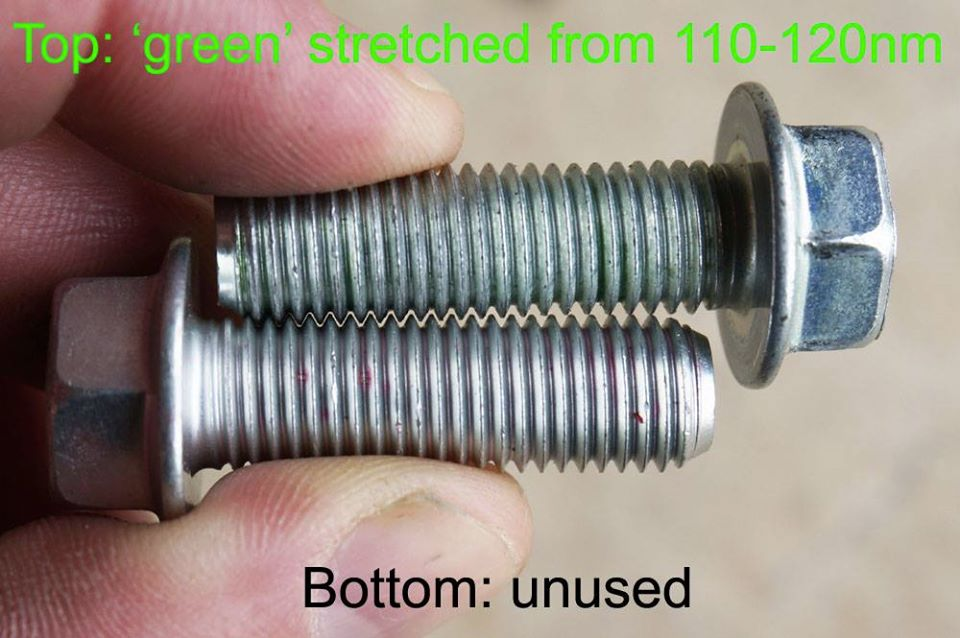
*933 washer-based bolts, listed as "green coated" but actually black in appearance. Stretches from 60nm onwards. During bench test, very serious stretching occurred around 70nm. On a vehicle test, the stretching was not as serious as the bench test, but definitely still present.
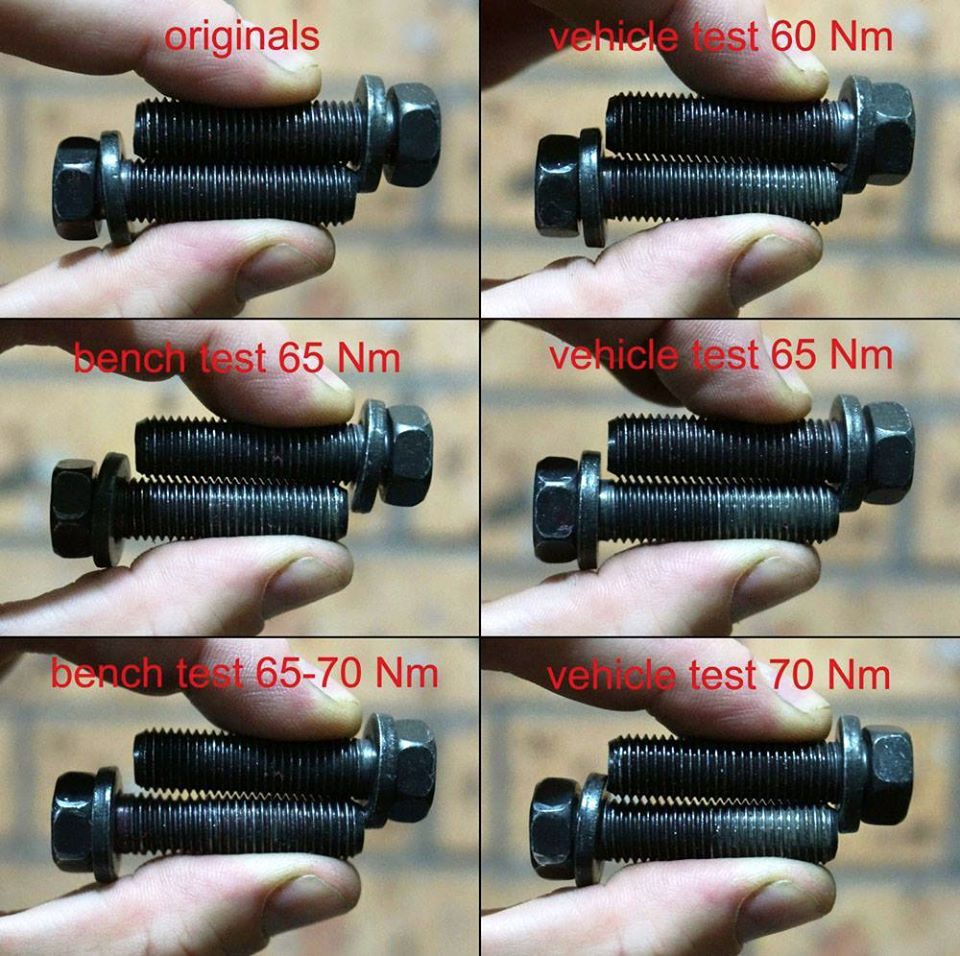
Documentation and workshop manuals
All workshop manuals I've seen for the 90 Series (and enquries from Toyota workshops), have neglected to include information about different bolts, and have claimed a single torque rating of 80nm - dangerous!
An outdated Toyota workshop manual for a T100 in USA, differentiated between non/dust cover models and the respective torque ratings. Apparently later revisions of this manual then neglected to mention the difference - strange!
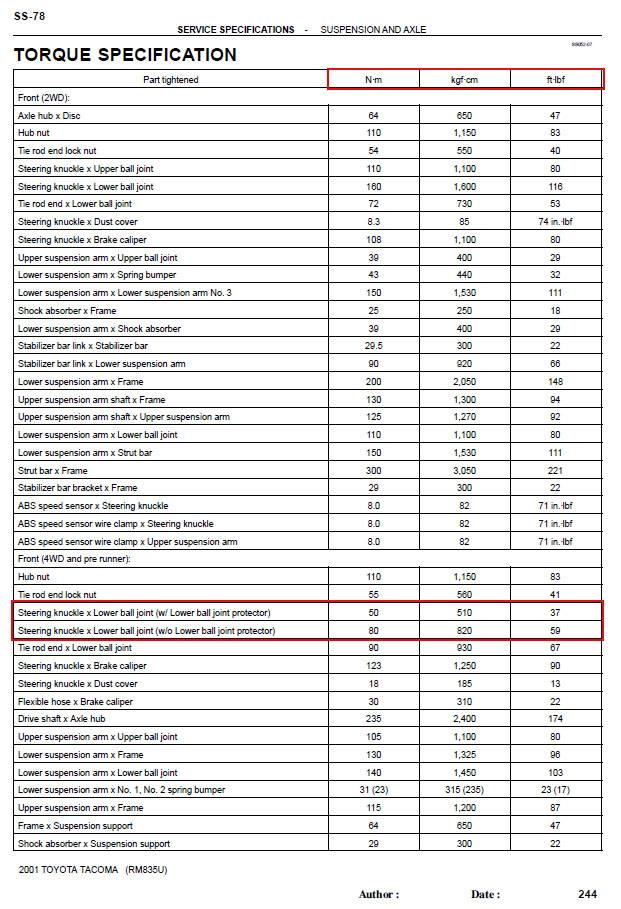
Other Comparisons
The two types of flange-head bolts, *406 and *505, whilst having different strengths & torque ratings, have the exact same head markings. So the only difference in appearance is their coating colour.
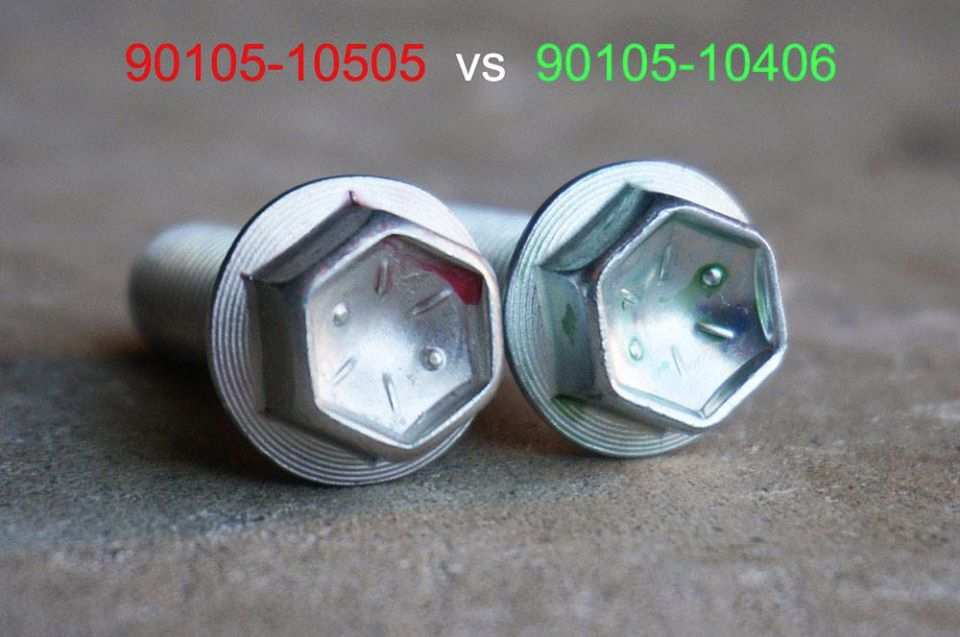
Length comparison - shorter flange-head bolts vs washer-based bolt:
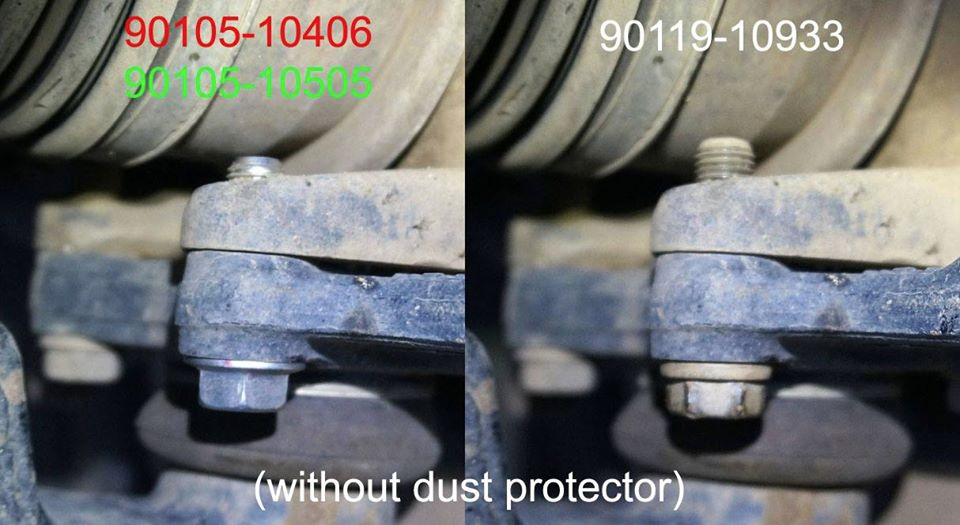
Again, but with a dust cover mounting ring in place:
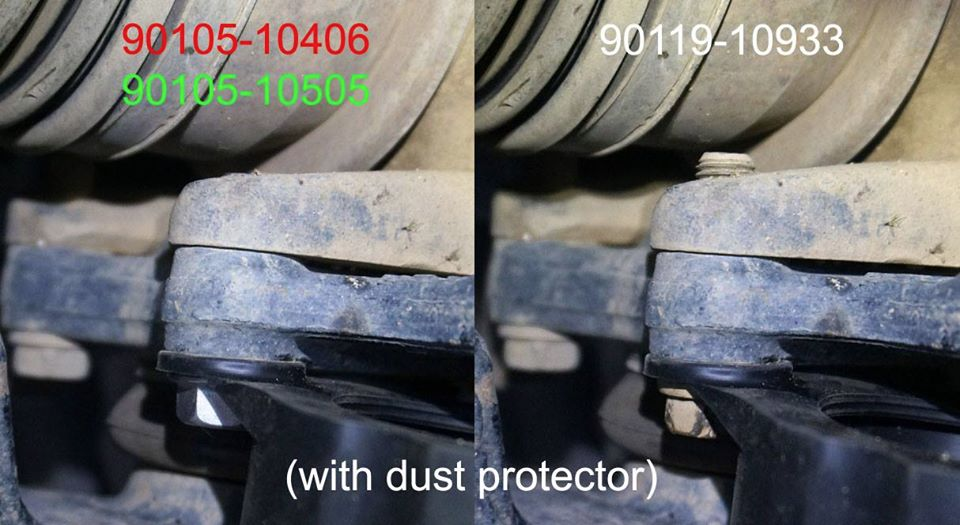


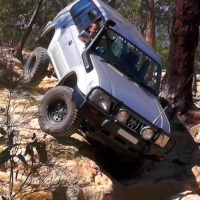
Comments
I wonder if there are different properties in the coatings between green and red that may affect the lubricity of the threads. Lubricity of threads affects how much strain will be applied for a given torque. i.e. a dry thread will achieve a given torque upon tightening quicker than one that has antisieze applied. One will antiseize is likely to elongate more at a given torque.
Spotting the rare reference to the torque when using the bolts for the dust cover is great as I had wondered for a while if those bolts were designed to be torqued so as to reach the plastic strain region and thus a higher stress than the 80Nm bolts which are stressed for the elastic strain region but I don't think they are given that info from the T100.